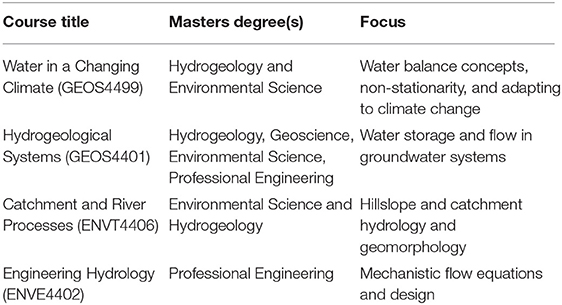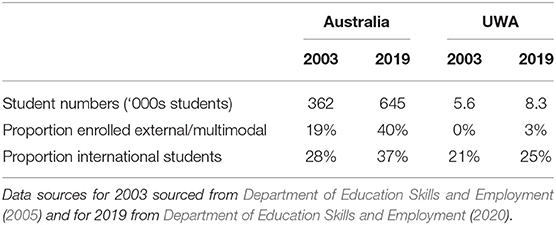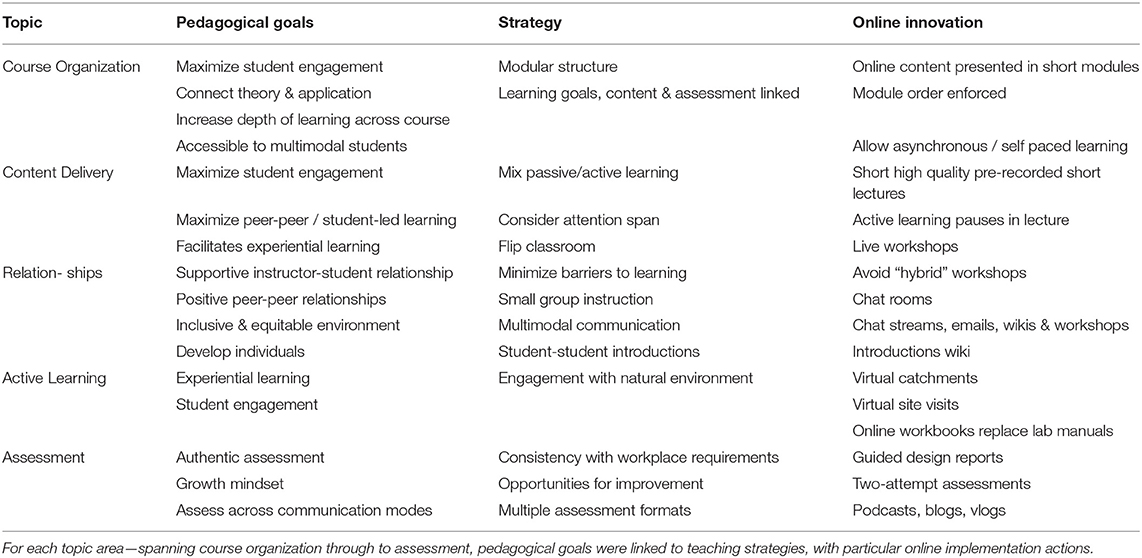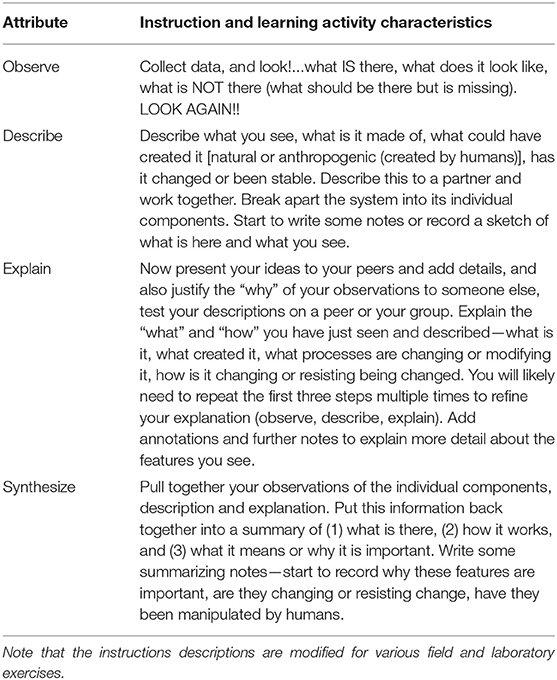- 1School of Engineering, University of Western Australia, Perth, WA, Australia
- 2Center for Water and Spatial Sciences, University of Western Australia, Perth, WA, Australia
- 3School of Earth Sciences, University of Western Australia, Perth, WA, Australia
- 4School of Agriculture and Environment, University of Western Australia, Perth, WA, Australia
Like most water education institutions worldwide, hydrology instructors at the University of Western Australia (UWA) had to rapidly adapt traditional teaching strategies to manage the COVID-19 pandemic. With diverse student cohorts, including a large fraction of international students prevented from reaching Australia by travel restrictions, key requirements from this transition were to create supportive, inclusive online educational settings, and to maximize student engagement in their courses. Here, we draw on experiences in four hydrology courses to illustrate how we used a holistic approach spanning course structure, content delivery, active learning experiences and authentic assessment to protect these key pedagogical requirements during the transition to online learning. Some aspects of this approach—for example, creating an online “virtual watershed” in lieu of field trips—required sophisticated technology to support online innovation. Other aspects, however, relied primarily on existing features in learning management systems such as Blackboard and on re-organization of course structure and communication approaches to support online learning, with minimal need for new technology or software. The outcomes in these courses as measured by student engagement, enrolment and self-reported satisfaction were positive, with student evaluations remaining similar to those of pre-pandemic levels. Previous interest in running flipped classrooms and familiarity with technology among instructors and students were helpful in enabling the transition. While content-delivery may remain in an online mode for hydrology classes at UWA long term, opportunities to re-introduce field work, laboratories and other face-to-face active learning activities are eagerly awaited by instructors and students alike.
1. Introduction
The University of Australia (UWA) is located in Perth, a geographically isolated city of approximately 2 million people on the Indian Ocean Rim (Kennewell and Shaw, 2008). Hydrology and water management have featured in UWA's education program since the university was founded in 1911 (UWA, 2021). Today hydrology remains foundational to programs in civil and environmental engineering, environmental science, geography, earth science and hydrogeology. Whilst the employment drivers for graduates have changed over the decades, hydrology has remained critically important to Western Australia and Perth for a variety of reasons, including the water resource supply and management consequences of sustained climatic drying (since approximately 1970, McFarlane et al., 2012; McFarlane, 2016); the water resource management needs of the mining industry—which underpins much of Australia's economic prosperity, is substantially headquartered in Perth and which employs many UWA graduates; issues of secondary salinization which have shaped land use policy (Elshafei et al., 2015; Callow et al., 2020); and in the context of conserving the exceptional biodiversity hotspot of South-West Western Australia (Hopper and Gioia, 2004).
In common with higher education institutions worldwide, UWA has had to rapidly respond to the lack of mobility of students and staff brought about by the COVID-19 pandemic (Marinoni and van't Land, 2020). Hydrology teaching at UWA has largely been based on traditional face-to-face lecture and workshop learning environments, supplemented by laboratories, computer laboratories and field trips. Although some courses had begun to offer aspects of the hydrology curriculum online prior to 2020, in most cases the COVID-19 pandemic required rapid innovation in hydrology teaching. While transitioning teaching presented challenges to instructors, it was also timely and aligned with trends affecting higher education and working practices in Australia and worldwide. These trends include the rapid digitization of work (Arntz et al., 2020) and the need to limit long distance travel due to the unfolding climate crisis (Wright, 2021). Together these challenges motivate us to seek new and effective approaches related to both content and delivery, for example, encouraging students to explore data-driven aspects of hydrologic science (e.g., Carey and Gougis, 2017), without losing the opportunity to learn field skills and all the experiences and complexities therein.
Here we draw on the experiences from four hydrology courses taught within separate Masters degree programs (Table 1) to illustrate how we used a holistic approach to transition our teaching online. Firstly, we present some context about UWA, including major trends in teaching modality and student demographics prior to 2020. Next we highlight shared elements of a pedagogical framework prioritized by all hydrology instructors at UWA during the transition to online teaching. Differences in pedagogy and learning aims between courses and disciplines are also noted. We follow the elements of this framework to demonstrate how specific teaching strategies that supported our pedagogical aims were realized as a variety of online innovations. We support this presentation with an online repository of teaching material examples (available from: https://doi.org/10.26182/q642-qp74).
2. Institutional Context
UWA is a public Australian University: it is self-governing but operates within legislative requirements established by the Australian Federal (national) Government. Australian educational policy is set at state and national levels. Changing national policy over the past 20 years has achieved a number of broad outcomes, including (Norton et al., 2016):
• Increases in the total number and the proportion of the university-aged population engaged in higher education;
• Increases in the proportion of students engaged in remote or multi-modal (face to face and online) learning;
• Increases in the number and proportion of students who are “international” (non-Australian or New Zealand residents).
In addition to changes in national policy, these outcomes also reflect changing technology, demographics of students, job-market expectations, international competition for full-fee paying students and Australia's relatively attractive profile as an education provider to these students, along with normalization of online teaching (Bradmore and Smyrnios, 2009; Norton et al., 2016). Although UWA's student demographics largely followed the national trends (see Table 2), prior to 2020 UWA was an outlier in terms of provision of external (off-campus) or multi-modal enrolments. UWA has encouraged instructors to create external access to learning materials via universal use of online Learning Management Systems (LMS, such as Blackboard) and policies requiring lecture capture and web-hosting since 2010, with broadened requirements for flexible teaching and learning in 2018 (University of Western Australia Senate, 2018). Yet as of 2018, only 3% of domestic students at UWA were enrolled in external or multi-modal courses (Department of Education Skills and Employment, 2020) (Table 2).
Prior to 2012, teaching in hydrology occurred at the undergraduate level, with a single course teaching into Environmental Engineering, Geography and Environmental Science majors, with also an advanced Engineering Hydrology unit. In 2012 UWA restructured degree programs following the “Bologna Model” (Zahavi and Friedman, 2019). Degrees were modernized to include second cycle Masters degree offerings with a range of water-related specializations. Hydrology-related teaching emerged as a core component of new Masters programs in Hydrogeology, Environmental Engineering, and Environmental Science. The contemporary student cohort in each of these programs originates from varied backgrounds with different levels of prior learning, and often pursuing distinct employment opportunities after graduation. Accordingly, a range of water-related courses are now offered, each with a unique focus in their learning objectives (see Table 1). In general, these Masters programs also attract a larger proportion of international students compared to the university wide data shown in Table 2.
3. COVID-19 Experience in Western Australia
Western Australia's COVID-19 experience has been unusual. Until March 2022, Western Australia successfully pursued an “elimination” or “zero-COVID” strategy by severely restricting travel to the state. Western Australian travel bans were internal (applying within the state and to other states in Australia) and operated within a larger set of Australia-wide restrictions on international travel. Travel that was allowed required a 2-week mandatory quarantine period before visitors could enter the Western Australian community. The COVID-19 pandemic emerged during the long Australian university summer holiday period. Many international students were thus unable to return to (or begin study at) UWA due to the travel restrictions. Many international students present in Australian depend on local employment to support their income as they study. These students were not made eligible for financial support associated with COVID-19 restrictions, and were openly advised by national leadership to “return home” as the pandemic took hold. Many students did so. Consequently, supporting the education of a substantial international student cohort based outside of the country has been a persistent requirement of pandemic online teaching.
In spite of the local elimination strategy, public health restrictions have impacted teaching at UWA. Instruction moved completely online for 4 months from March to July 2020. Several short “lockdowns” in February, April, May, and June 2021 also required temporary periods of online instruction. Online instruction at UWA has now been normalized by the need to cater for off-shore international student participation, to rapidly shift between modes of instruction in the case of lockdowns, and to offer domestic students an opportunity to select learning modes based on preference, convenience, or public health grounds.
The use of online instruction to rapidly provide flexible content delivery, engagement and assessment at UWA thus parallels experiences in other global educational environments. Specific local issues arise around the demography of the classes and the need to prevent pre-existing differences between local and international students—differences of culture, experience, language and familiarity with the hydrology and environment in Western Australia—from being further exacerbated by distance, time-zone and technology.
4. Pedagogical Approaches
4.1. Teaching Philosophy
The instructors and courses we discuss are connected thematically by water, and pedagogically by our commitment to creating a learning culture of engagement, support, inclusion, and inspiration (Ramsden, 2008). This commitment represents our common response to the challenges created by the pandemic and online learning in our classes and underpins our shared pedagogy. Across our classes, we also share a common constructivist outlook (Fosnot, 2013). We are all committed to authentic learning and assessment experiences in our classes (Cowan, 2004; Stefani, 2008), and to personalized learning that recognizes the individuation of each student (Itow, 2020). We all seek to be integrative—in the sense that the courses we teach are related to other educational experiences within our students' degree programs. These features have long been highlighted as important components of online education (e.g., Miranda et al., 2008; Lalonde, 2011; Itow, 2020).
Differences in disciplinary perspectives and pedagogies nevertheless emerge across the hydrology courses. For example geography courses emphasize experiential learning cycles (e.g., concrete experience → reflective observation → abstract conceptualization → active experimentation, Kolb, 1976; Healey and Jenkins, 2000). Conversely, engineering courses reflect the engineering competencies defined by Engineers Australia (which provides accreditation to professional engineering degrees in Australia, Engineers Australia, 2011) and emphasize connections between hydrological content knowledge and the engineering design process (Dowling et al., 2020). Table 3 outlines shared pedagogical goals across our hydrology teaching, the strategies we used to achieve these goals and the specific innovations we used to implement these strategies online.
4.2. Course Organization
As summarized in Table 3, we targeted four pedagogical goals as we developed online courses: to maximize student engagement, which included making the course material accessible to employed students; to ensure that theory was connected to application within the course structure, and scaffolding learning so that depth and sophistication of the course content increased across the semester. These goals were largely achieved by designing the courses around small modules—an approach sometimes popularized as “chunked learning” (Martin et al., 2019). We adopted this strategy in all four courses, combining online, self-paced and asynchronous learning activities with scheduled online active learning sessions. This structure responded to both the need for flexibility in accessing learning content across the different student settings in the classes, and to the need to offer diverse learning experiences in online settings (Farmer and Ramsdale, 2016). For example, the Water in a Changing Climate course was split into 8 learning modules, each with explicit learning objectives. Several short pre-recorded videos supported content delivery. External resources were linked to the module to offer context and consolidation. The module concluded with a formative test for students against the learning objectives. The progression of module topics represents a logical development of ideas and complexity, scaffolding learning across the course. In Water in a Changing Climate, the first 4 weeks built understanding of hydrologic processes, data types and data sources. The second half of the course developed analytical and prediction skills with real-world applications.
Within each course, we staged the student progress across the modules to assist in conceptual development. This staging attempted to account for the diversity of graduate entry and exit points across the set of courses, and non-uniform student prior learning in areas of earth science and mathematics. Where students entered courses without a quantitative background, we provided optional “refresher” modules addressing concepts such as probability distributions. Exposure to mathematical concepts was heavily contextualized. For example, statistical distributions and non-stationarity were taught in the context of changing rainfall patterns using real data, and differential equations introduced through concepts of intuitive water balance exercises and explaining system non-linearities.
The logical structure of the material was supported by using existing tools in Blackboard allowing for scheduled or adaptive release of material to students. For example, in Engineering Hydrology, students needed to successfully complete a 5 question quiz about the previous module content before the next learning module's material could be accessed—thus tying together formative assessment and self-assessment with the course structure, and guiding students through a logical conceptual progression that deepened as the course progressed. This structure is illustrated in Figure 1.
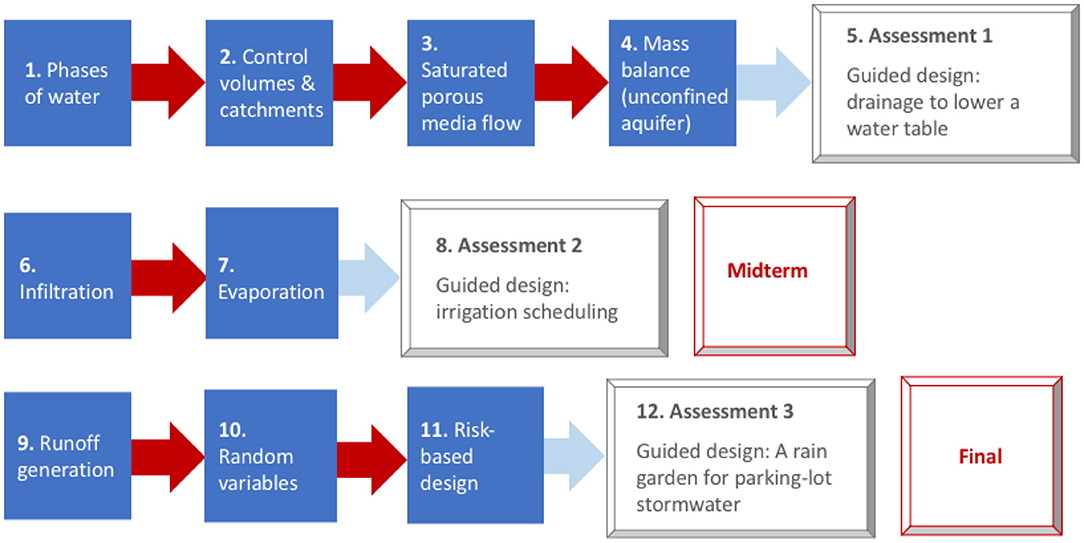
Figure 1. Modular course structure in Engineering Hydrology. Numbers indicate the week in the semester (12 teaching weeks). Red arrows indicate points where access to subsequent course content required passing an ungraded quiz on previous content. Access to materials relating to project-based assessments (blue arrows) was unrestricted. Each course module builds in the previous, culminating in a guided-design assessment. Examination-based additional assessments complement and contrast with the “project-based” assessments.
4.3. Content Delivery
In designing online content delivery, we aimed to support high student engagement, create opportunities for peer-peer or student-led learning, and to facilitate experiential rather than abstracted or passive learning (see Table 3). The major strategy we used to achieve this goal was to flip our classrooms (Bishop and Verleger, 2013). Some of the courses operated as flipped classrooms prior to the pandemic, while others were conventionally structured. With online learning, we all found a flipped classroom model was essential. In line with a modular course structure, we also adopted a modular approach to sharing lecture material, usually delivered as high quality, short (5–20 min) pre-recorded lectures which were supplied to students online through the Echo360 platform.
Videos for content delivery were recorded in a variety of platforms (via MS Teams, in a purpose-built recording studios at UWA, via Powerpoint or Echo360). Use of the recording studio allowed for improved audiovisual quality and the use of professional editing software. Some fieldtrip content was filmed once inter-regional travel was possible, using DSLR (with a tripod and wireless radio microphones to ensure adequate sound quality) and drone footage, which we then edited into vignettes using Adobe Premiere Pro. Students were able to access the videos within Blackboard or through a Lecture Capture software interface linked to Blackboard. Slides were simplified to maximize student focus on the lecturer's narration (e.g., see Figure 2).
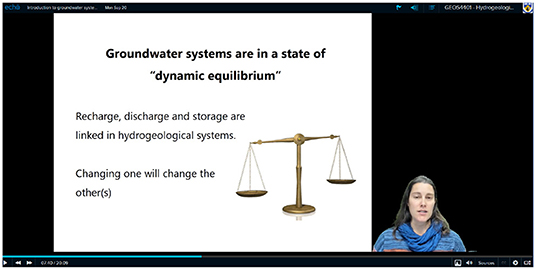
Figure 2. Screen-shot of video recording captured in one of UWA's purpose-built recording studios and deployed to students through the Lecture Capture system, featuring author SB.
Our use of short modularized lecture material was a response to literature showing that long lecture formats reduce student engagement in online education (Farmer and Ramsdale, 2016), and that attention spans often decline within 15 min of a lecture commencing (Middendorf and Kalish, 1996). The lecture videos were generally watched outside of scheduled classes, in line with a flipped classroom model. If lecture recordings were watched during timetabled online workshops, then breaks between lecture modules were used to introduce active learning elements (known to improve student perceptions of teaching, and learning outcomes, Jones, 2003). For example, students completed guided-note-taking worksheets, or quizzes on the video material. Within each learning module the lecture content was supported by clearly defined learning objectives and key terms, location-specific applications of theory, external links to contextual information and a formative quiz to facilitate students testing their achievement of the learning objectives. An example of a weekly learning module's content is provided in Figure 3.
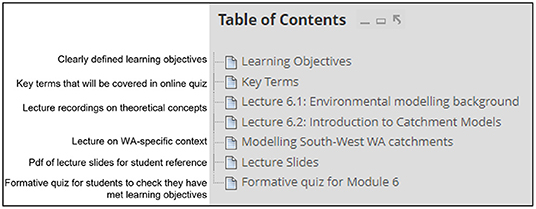
Figure 3. Annotated Table of Contents from LMS showing modular delivery of learning content on the topic of Modeling Hydrologic Systems within the Water in a Changing Climate course.
One challenge posed by a diverse student cohort is to move beyond idealized (“textbook”) depictions of hillslope hydrology and aquifer processes, with particular reference to the specifics of “place” around UWA. Students often struggle to link concepts about processes to the biophysical expression of real landscapes—particularly Western Australian landscapes which often defy unstated assumptions about geomorphic or hydrologic processes as depicted in international texts. Inclusion of WA-specific content has thus become particularly important as a response to COVID-19 border closures, and online content delivery emphasized place- and problem-specific conceptualizations. For example, the challenge of rising saline watertables in the inland region of Western Australia (brought about by land clearing), and the declining fresh watertables in the sandy coastal plain (brought about by extraction and declining recharge) are commonly conflated and confused by students. To provide necessary scaffolding to student learning, we firstly conceptualized sites and landscapes, then encouraged students to interrogate the dominant hydrological processes and their interactions, ultimately emboldening students to move from “questioning their learning” to “learning to question” (Abrandt Dahlgren and Öberg, 2001).
4.4. Student Engagement and Relationships
A major concern we held when moving classes online was how to build rapport with our students and facilitate the formation of positive peer-peer relationships in the classes. To achieve this we strove to create opportunities for interpersonal communication and engagement within our classes, to use multiple media to enable such communication to occur, and to set clear expectations for our class. We used multiple communication channels in our courses, which meant moving away from traditional (oral, email) communication media to more instant and responsive options. Hydrogeology, for example, moved communication with the lecturer primarily to a chat function in MS Teams. The use of a phone-based app allowed the lecturer to be more responsive to students in real time than was possible via email. We were aware that a consistent communication style might be particularly valuable for students using English as a Second or subsequent Language (ESL). Some courses achieved this consistency through the use of common templates for syllabi (course outlines), which were rolled out, for example, across Environmental Science and Geography classes. Engineering Hydrology used a consistent weekly email format which identified what material students needed to access online that week, what quizzes to complete, which assessments were in progress and their due dates, and any other relevant material to help students stay on track in the absence of face to face classes.
Functionality within online teaching and meeting tools provided further opportunity for student engagement and rapport building. An Introductions Wiki allowed students (and teaching staff) to share personal stories prior to the commencement of the course. The use of “break-out rooms” within Teams was one successful strategy to encourage development of peer-peer collegial learning communities, in which smaller groups worked to solve problems together, similar to a table of 2-6 students in a traditional classroom environment. Real-time engagement during workshops was fostered through collaboration on virtual whiteboards using the Limnnu software. In Engineering Hydrology where enrolment was split nearly 50-50 between domestic and international students, two workshops were offered, one for each cohort. This allowed students to speak with peers in their shared languages, and for instructors to provide additional assistance with language and interpretation in the “international” workshop, where language skills were a significant pedagogical issue.
4.5. Active Learning and Skill Development
Active learning experiences form a key attribute of our pedagogical approach (see Table 3). Field and laboratory experiences, which provide a foundation for conceptual learning (Dummer et al., 2008; Dunphy and Spellman, 2009), were particularly impacted by the pandemic. These hands-on experiences would conventionally provide an opportunity to learn through the “ODES” framework, presented in Table 4, which links to the cycles of learning through Observation; Description; Explanation; and Synthesis. ODES deliberately embraces Bloom's taxonomy (Bloom, 1956), by escalating from observation, through description, to explanation and concluding in synthesis. To retain this style of learning opportunity online we provided learners with measured data (substituting for real world observations) and used these data to guide students through the ODES framework.
The instructors of Catchment and River Processes constructed virtual field sites using digital imaging technologies. These allowed students to perform field-like digital fluvial geomorphology investigations. Virtual fieldtrip data was collected using a DJI Mavic 2 Pro drone, (operated under UWA CASA ReOC licence CASA.ReOC.0628), flown at 75 m AGL and processed using Agisoft Metashape Professional with workflows from Callow (Callow et al., 2018) and May (May et al., 2021). Students visualized the datasets in QGIS, ArcGIS Pro and the free Agisoft Viewer software. Students were provided with a high resolution (5cm) orthphotomosaic (Figure 4A), a Digital Terrain Model (DTM) or bare-earth Digital Elevation Model (Figure 4B), and a Digital Surface Model (DSM). From these datasets, students could extract elevation cross sections, view and map river hydraulic and geomorphic courses, and compute a Canopy Height Model (CHM, calculated as CHM = DSM-DTM, Figure 4C) from which ecotones could be inferred. Additionally, full 3-D models of the virtual catchment allowed students to 3-D manipulate and orientate the scene, and to also explore profiles (Figure 4D). Learners then used these data in-lieu of field surveys to construct conceptual models of the system, processes and outline management issues. All datasets described above and used in Figure 4, are available from https://doi.org/10.26182/q642-qp74).
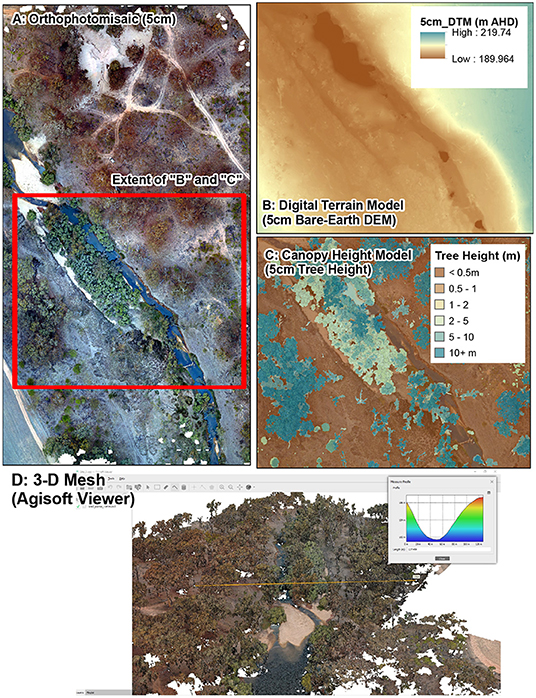
Figure 4. Example of digital field sites constructed from drone photogrammetry to create various types of digital field data in-lieu of field data collection, including: (A) A 5 cm high-resolution digital orthophotomosaic of the field site; (B) A Digital Terrain Model (DTM) or bare-earth Digital Elevation Model (DEM) of elevation; (C) Canopy Height Model of tree height; (D) 3-D scene as viewed in Agisoft Viewer.
Prior to the remote teaching requirement the Water in a Changing Climate course engaged students in hands-on laboratory activities. These illuminated concepts relating to Darcy's Law, runoff thresholds and aquifer transport pathways within “desktop catchments”—desktop-scale physical models of a sandy hillslope or aquifer cross-section. We replaced these laboratory sessions with an online workbook of activities created in R Bookdown. Students were able to complete many components of these exercises independently, supported by video vignettes. Student-generated data were compiled in online worksheets, which formed focal points for discussion in timetabled workshops. Whilst the activity workbook could not fully reproduce hands-on experimental learning, time-lapse videos of the hands-on experiments were included as vignettes, and supplemented with the online digital tools or models as appropriate. For example, students used the ParFlow SandTank model (https://sandtank.hydroframe.org) to attempt to replicate experimentally generated aquifer flow states (Figure 5). Guided data analysis was challenging in an online environment when students were constrained to one screen on which to consider demonstrations, read notes and undertake analysis. Providing dedicated time in workshops in which students could immediately rewatch demonstrations was helpful in reducing these hardware-related blocks to learning. After each “chunk” of material in the workshop the recordings were stopped and a note made in the chat about the topic of that recording so that students could easily find specific learning content later, and students could re-watch the demonstration during the workshop while they attempted the activity themselves.
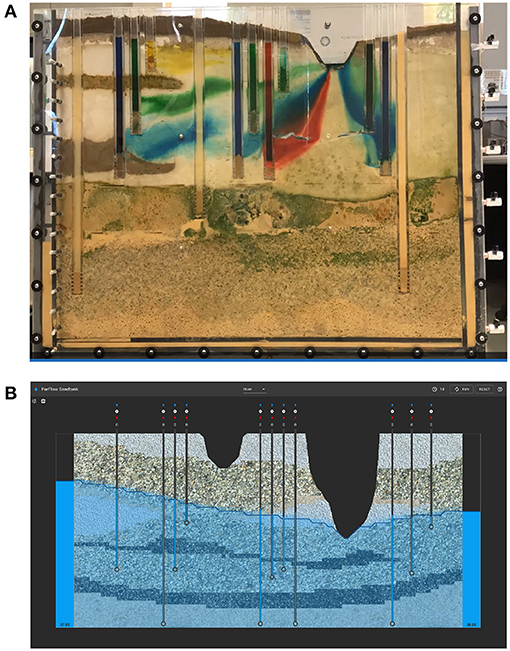
Figure 5. Example of transitioning a hands-on physical aquifer model (A) to a digital analog based on the ParFlow SandTank (B).
4.6. Assessment
All courses aimed to create authentic and fair assessment experiences (see Table 3). These were designed to explicitly test the course learning objectives while offering students an opportunity to produce assessed materials that were consistent with workplace expectations. Thus, the courses considered content knowledge while also assessing communication skills, critical thinking, and competency across different communication styles. For example Catchment and River Processes replaced an in-class oral presentation with a 3-min podcast on a geomorphic or hydrological topic of their choice. Not only were students enthusiastic about the novelty and pleasure of this experience, but the set of class podcasts was then made available as a resource for other students—a distinct outcome from the transient nature of an in-class oral. The assessment thus also helped support deeper learning among a student cohort which was familiar with the broad themes of the course but had limited specific topical knowledge.
Transparency in assessment was facilitated by publishing marking rubrics for each assessment, and using the markup tools (e.g., quicknotes) in Turnitin to provide individual feedback on written reports. Overall comments on student performance in particular assessment items were provided using Teams or LMS announcements. This scaffolded approach to feedback allowed efficient individualized feedback delivery, which we have found to be particularly important when teaching to cohorts of mixed backgrounds (e.g., domestic vs. international students; with or without cognate background).
Online assessment opportunities were also able to support pedagogical goals such as promoting a growth mindset. For example, administering an examination online with Blackboard's inbuilt multiple-choice examination tools speeds grading enormously. With the flexibility to test and assess multiple times, Engineering Hydrology adopted a 2-stage midterm examination approach. Students were able to take the 15 question exam twice in 4 days, and receive a weighted (75–25%) average of their scores. Almost all students were able to improve their performance between the two attempts, some dramatically so—suggestive of the students learning from their initial struggles.
5. Discussion
5.1. Feedback and Student Experience
Moving hydrology education at UWA online enabled us to maintain continuity of instruction during a period of profound disruption to the University and its students. While the rapid transition required significant time investment from instructors and is yet to represent a mature and fully developed approach to course delivery, it also led to distinct benefits and improvements to student learning outcomes.
Student feedback about all four courses has been generally positive. Instructors were nominated for excellence in teaching awards, and, although course evaluations were suspended in 2020, student evaluations of online teaching in 2021 were also generally positive. Students have expressed appreciation for the care in course organization and content delivery. International students in particular highlighted the significant benefits of pre-recorded lectures. The capacity to pause, re-watch and if necessary slow down the playback rate of lecture material was consistently highlighted as a positive that particularly benefits students whose first language is not English. Once the initial recording of lecture modules was complete, having pre-recorded material lowers the workload for course preparation, so that time could be invested in improving and updating select material and offering active support to students. As instructors we have had to be more deliberate in designing our courses, more selective about the quantity and purpose of the material we include, and to provide greater effort in communicating weekly work plans and expectations to students. It is likely that these efforts addressed areas that may have previously been weak or unstated in our teaching.
5.2. Enabling Factors
As instructors, our experience in moving classes online was smoothed by two things: Firstly we were all independently committed to active learning and flipped classrooms. Our pedagogies retained elements of classical behaviorist university instruction (e.g., lectures), but also contained constructivist and social-constructivist approaches (Ertmer and Newby, 1993), with student-centered, peer-driven, active learning in all courses. Our classes were all therefore either flipped or in a transition toward being flipped—a situation which set us up well to adapt to online instruction in a flipped mode. Secondly, our expertise and available technologies were well-suited to solving many of our online teaching challenges. As instructors, we were all technologically literate, able to code and to program, and willing to use available educational technologies. Our students had a similar profile. From discussions across the whole of UWA, we understand that this distinguishes our experience from that of colleagues in less technologically-oriented fields, where neither instructors nor students were as well-prepared or as well able to endure the transition online.
As such, we were largely able to create online learning experiences that delivered on our strategies and pedagogical aims. Technological challenges were present, perhaps most notably for international students operating behind firewall-protected ISPs. These students, while able to use a UWA VPN, sometimes struggled with access to 3rd party sites and software. Building collegiality and encouraging interaction in online settings has sometimes proven difficult, yet is key to ensuring good learning outcomes. Allocating time and creating activities in breakout room sessions has been effective in some cases to ensure that students understand the expectation to use their videos and actively participate, rather than sitting muted in the background. Encouraging use of the chat function has also, in some cases, helped shy students, those lacking in confidence in their English skills, or those with weak internet connections, maintain positive communication with peers and instructors.
5.3. Moving to a Post-COVID Teaching Model
The nature of the work students do in online learning can offer strong parallels with the expectations of the workplace. Many of our students will or already do work in the resources or development sector, or as government or regulatory officials, industry proponents or environmental consultants. These sectors are also pressured—acutely by COVID-19, and in the longer term by cost, carbon-footprint and safety requirements—to adopt virtual and remote technologies for site assessment and collaboration (McNab and Garcia-Vasquez, 2011). Including desktop-analysis of 3-D reconstructed, digital field sites in the course was embraced by students as teaching key, workplace relevant skills. Similarly, familiarity with online and virtual communication, engagement, team building and project delivery, all of which were modeled in the online classes, increasingly represent necessary workplace skills (Balliester and Elsheikhi, 2018; Cook, 2020).
Some learning experiences are and will likely remain challenging to fully replicate online. Observational field skills are difficult to teach without being present in the field. Rapport building and teamwork among students are easier to achieve online if supplemented by some level of face-to-face interaction, and can be very hard to achieve in online-only settings where technology, internet quality and language barriers all “distance” people from one another (Meluso et al., 2020). Sharing a sense of place and building intuition about the physical environment in a novel location is also difficult without the opportunity for immersive experiences in that environment. Feedback from students highlights that opportunities for in-person learning are highly valued, perhaps more so now than before the pandemic.
For this reason, we expect that online teaching will likely remain in our courses, but that in many cases we will attempt to enact a blended learning model with some level of face to face learning retained. Face to face learning experiences would focus on teaching field skills, fostering environmental literacy and a sense of place, and on relationship-oriented active learning experiences where peer-to-peer instruction and student-led experiences are prioritized.
6. Conclusion
With online teaching of hydrology likely to find ongoing applications at UWA and worldwide, our collective experiences during the first years of the COVID-19 pandemic highlight some valuable lessons for others teaching hydrological subjects online. Our five key take-home messages are summarized in Figure 6 and described below.
• Streamline unit content: Streamlining involves reducing content to that the core messages and tasks are the clear focus of the course. Making explicit connections between learning objectives, content, active learning activities and assessment helps communicate the logic of the course design to students. This communication is important, as opportunities to clarify course objectives and purpose are limited in the absence of face to face communication.
• Chunk and record content, for student-paced learning: Small units of content maximize flexibility for students to access course material at times compatible with diverse schedules and timezones. Opportunities to re-watch content enables students to revisit areas of confusion. This has been particularly valuable for students speaking English as a second or subsequent language.
• Establish a learning culture: Online modalities can promote passive learning styles. Student participation needs to be actively encouraged through use of multiple fora, active online activities, and, where possible, retention of some face-to-face engagement that focuses on building trust and rapport.
• Structure opportunities for growth mind-set into course design: By structuring the course around repeated activities/assessments with some commonalities, the course structure can promote continuous improvement and consolidation. Streamlining course content (as per point 1) can clarify which activities are likely to offer most value in line with course objectives.
• The technology exists: Existing tools enabled successful delivery of learning materials online. Digital analogues have limitations, but also benefits. For example, synthetic catchments or systems may span a greater range of conditions than students can physically visit in the field or simulate in the lab.
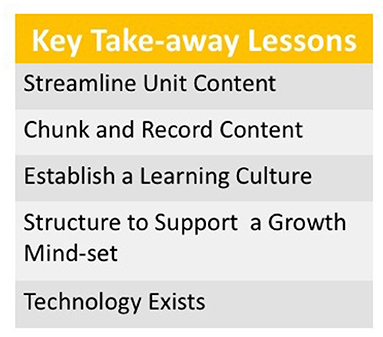
Figure 6. Five core messages for others considering taking hydrology content online, based on the UWA experience.
With the experience of moving our courses online now complete, and with streamlined courses with pre-recorded content and thoughtful design now in place, the hydrology instructors at UWA are well-equipped for ongoing multi-modal instruction. We fully expect that sharing our experiences and learning from those of other instructors innovating in digital water teaching, in conjunction with new innovations in technology for online learning, will produce ongoing improvements in our courses, their delivery and online student learning outcomes.
Data Availability Statement
Data cited in this manuscript are available from: https://doi.org/10.26182/q642-qp74. Other queries may be directed to the authors.
Author Contributions
ST and SB conceived the paper and contributed material relating to the Engineering Hydrology, Water in a Changing Climate, and Hydrogeological Systems courses. MH and JC contributed material relating to the Water in a Changing Climate and Catchment and River Processes courses. All authors contributed to writing and editing the text.
Conflict of Interest
The authors declare that the research was conducted in the absence of any commercial or financial relationships that could be construed as a potential conflict of interest.
Publisher's Note
All claims expressed in this article are solely those of the authors and do not necessarily represent those of their affiliated organizations, or those of the publisher, the editors and the reviewers. Any product that may be evaluated in this article, or claim that may be made by its manufacturer, is not guaranteed or endorsed by the publisher.
Acknowledgments
Prof. Matthew Tonts was acknowledged as the co-developer of the ODES framework (Table 4) with JC, as part of the course GEOG2202 Reading Landscapes course. We also sincerely thank the UWA Educational Enhancement Unit members Miela Kolomaznik and Lee-Von Kim who contributed to the design of many innovations described here.
References
Abrandt Dahlgren, M., and Öberg, G. (2001). Questioning to learn and learning to question: structure and function of problem-based learning scenarios in environmental science education. Higher Educ. 41, 263–282. doi: 10.1023/A:1004138810465
Arntz, M., Gregory, T., and Zierahn, U. (2020). “Digitization and the future of work: macroeconomic consequences,” in Handbook of Labor, Human Resources and Population Economics, ed K. Zimmermann (Cham: Springer). doi: 10.1007/978-3-319-57365-6_11-1
Balliester, T., and Elsheikhi, A. (2018). “The future of work: a literature review,” in ILO Research Department Working Paper (Geneva), 1–62.
Bishop, J., and Verleger, M. A. (2013). “The flipped classroom: a survey of the research,” in 2013 ASEE Annual Conference & Exposition (Atlanta, GA), 23–1200. doi: 10.18260/1-2–22585
Bloom, B. S. (1956). Taxonomy of Educational Objectives. Vol. 1: Cognitive Domain. New York, NY: McKay.
Bradmore, D. J., and Smyrnios, K. X. (2009). The writing on the wall: responses of australian public universities to competition in global higher education. Higher Educ. Res. Dev. 28, 495–508. doi: 10.1080/07294360903161154
Callow, J., May, S., and Leopold, M. (2018). Drone photogrammetry and kmeans point cloud filtering to create high resolution topographic and inundation models of coastal sediment archives. Earth Surface Process. Landforms 43, 2603–2615. doi: 10.1002/esp.4419
Callow, J. N., Hipsey, M. R., and Vogwill, R. I. (2020). Surface water as a cause of land degradation from dryland salinity. Hydrol. Earth Syst. Sci. 24, 717–734. doi: 10.5194/hess-24-717-2020
Carey, C. C., and Gougis, R. D. (2017). Simulation modeling of lakes in undergraduate and graduate classrooms increases comprehension of climate change concepts and experience with computational tools. J. Sci. Educ. Technol. 26, 1–11. doi: 10.1007/s10956-016-9644-2
Cook, D. (2020). The Global Remote Work Revolution and the Future of Work. The Business of Pandemics: The COVID-19 Story. New York, NY: Auerbach Publications. doi: 10.1201/9781003094937-10
Cowan, J. (2004). “Education for higher level capabilities: beyond alignment, to integration,” in Challenges in Teaching and Learning in Higher Education (Aveiro: University of Aveiro and SLO-Netherlands Institute for Curriculum Development).
Department of Education Skills Employment (2005). Higher Education Statistics 2004, Section 1, Commencing Students. Available online at: https://www.dese.gov.au/higher-education-statistics/resources/2004-commencing-students (accessed February 16, 2022).
Department of Education Skills Employment (2020). Higher Education Statistics 2019, Section 1, Commencing Students. Available online at: https://www.dese.gov.au/higher-education-statistics/resources/2019-section-1-commencing-students (accessed February 16, 2022).
Dowling, D., Hadgraft, R., Carew, A., McCarthy, T., Hargreaves, D., Baillie, C., et al. (2020). Engineering your Future: An Australasian Guide. John Wiley & Sons.
Dummer, T. J., Cook, I. G., Parker, S. L., Barrett, G. A., and Hull, A. P. (2008). Promoting and assessing “deep learning” in geography fieldwork: an evaluation of reflective field diaries. J. Geograph. Higher Educ. 32, 459–479. doi: 10.1080/03098260701728484
Dunphy, A., and Spellman, G. (2009). Geography fieldwork, fieldwork value and learning styles. Int. Res. Geograph. Environ. Educ. 18, 19–28. doi: 10.1080/10382040802591522
Elshafei, Y., Coletti, J., Sivapalan, M., and Hipsey, M. (2015). A model of the socio-hydrologic dynamics in a semiarid catchment: isolating feedbacks in the coupled human-hydrology system. Water Resour. Res. 51, 6442–6471. doi: 10.1002/2015WR017048
Engineers Australia (2011). Stage 1 Competency Standard for Professional Engineer. Engineers Australia.
Ertmer, P. A., and Newby, T. J. (1993). Behaviorism, cognitivism, constructivism: Comparing critical features from an instructional design perspective. Perform. Improvement Q. 6, 50–72. doi: 10.1111/j.1937-8327.1993.tb00605.x
Farmer, H., and Ramsdale, J. (2016). Teaching competencies for the online environment. Can. J. Learn. Technol. 42, 1–17. doi: 10.21432/T2V32J
Fosnot, C. T. (2013). Constructivism: Theory, Perspectives, and Practice. New York, NY; London: Teachers College Press.
Healey, M., and Jenkins, A. (2000). Kolb's experiential learning theory and its application in geography in higher education. J. Geograph. 99, 185–195. doi: 10.1080/00221340008978967
Hopper, S. D., and Gioia, P. (2004). The southwest australian floristic region: evolution and conservation of a global hot spot of biodiversity. Annu. Rev. Ecol. Evol. Syst. 35, 623–650. doi: 10.1146/annurev.ecolsys.35.112202.130201
Itow, R. C. (2020). Fostering valuable learning experiences by transforming current teaching practices: practical pedagogical approaches from online practitioners. Inform. Learn. Sci. doi: 10.1108/ILS-04-2020-0106
Jones, L. L. C. (2003). Are lectures a thing of the past? J. Coll. Sci. Teach. 32, 453. Available online at: https://www.proquest.com/scholarly-journals/are-lectures-thing-past/docview/200273624/se-2?accountid=14681
Kennewell, C., and Shaw, B. J. (2008). Perth, Western Australia. Cities 25, 243–255. doi: 10.1016/j.cities.2008.01.002
Kolb, D. A. (1976). Management and the learning process. California Manage. Rev. 18, 21–31. doi: 10.2307/41164649
Lalonde, C. (2011). Courses that deliver: reflecting on constructivist critical pedagogical approaches to teaching online and on-site foundations courses. Int. J. Teach. Learn. Higher Educ. 23, 408–423. Available online at: https://www.isetl.org/ijtlhe/pdf/IJTLHE1070.pdf
Marinoni, G., and van't Land, H. (2020). The impact of COVID-19 on global higher education. Int. Higher Educ. 102, 7–9. Available online at: https://ejournals.bc.edu/index.php/ihe/article/view/14593
Martin, F., Ritzhaupt, A., Kumar, S., and Budhrani, K. (2019). Award-winning faculty online teaching practices: course design, assessment and evaluation, and facilitation. Internet Higher Educ. 42, 34–43. doi: 10.1016/j.iheduc.2019.04.001
May, S. M., Callow, J. N., Brill, D., Hoffmeister, D., and May, J.-H. (2021). Revealing sediment transport pathways and geomorphic change in washover fans by combining drone-derived digital elevation models and single grain luminescence data. J. Geophys. Res. Earth Surface 126, e2020JF005792. doi: 10.1029/2020JF005792
McFarlane, D. (2016). Will Perth Have Enough Water for Its Diverse Needs in a Drying Climate? Planning Boomtown and Beyond. Perth, WA: UWA Publishing.
McFarlane, D., Strawbridge, M., Stone, R., and Paton, A. (2012). Managing groundwater levels in the face of uncertainty and change: a case study from gnangara. Water Sci. Technol. Water Supply 12, 321–328. doi: 10.2166/ws.2011.137
McNab, K., and Garcia-Vasquez, M. (2011). Autonomous and Remote Operation Technologies in Australian Mining. CSIRO Minerals Down Under Flagship, Minerals Futures Cluster Collaboration, by the Centre for Social Responsibility in Mining, Sustainable Minerals Institute, The University of Queensland, Brisbane, QLD.
Meluso, J., Johnson, S., and Bagrow, J. (2020). Making virtual teams work: redesigning virtual collaboration for the future. SocArXiv 1–14. doi: 10.31235/osf.io/wehsk
Middendorf, J., and Kalish, A. (1996). “The “change-up” in lectures,” in The National Teaching and Learning Forum, Vol. 5 (Wiley), 1–5. doi: 10.1002/ntlf.10026
Miranda, L., Morais, C., and Dias, P. (2008). “Pedagogical approaches for online environments,” in Computers and Education, eds A. J. Mendes, I. Pereira and R. Costa (London: Springer), 91–102. doi: 10.1007/978-1-84628-929-3_10
Norton, A., Norton, A., and Cakitaki, B. (2016). Mapping Australian Higher Education 2016. Available online at: https://apo.org.au/sites/default/files/resource-files/2016-08/apo-nid66245.pdf (accessed February 16, 2022).
Stefani, L. (2008). “Planning teaching and learning: curriculum design and development,” in A Handbook for Teaching and Learning in Higher Education, eds H. Fry, S. Ketteridge, and S. Marshall (London: Routledge), 58–75. doi: 10.4324/9780203891414-12
University of Western Australia Senate (2018). University Policy On: Lecture Capture. Available online at: https://www.uwa.edu.au/policy/home#b099cf0d-ace1-4ede-903e-91a93962088c (accessed February 16, 2022).
UWA (2021). History of the University. Available online at: https://www.web.uwa.edu.au/university/history (accessed February 16, 2022).
Wright, D. W. M. (2021). Travel and the climate crisis: exploring COVID-19 impacts and the power of stories to encourage change. J. Tourism Futures. doi: 10.1108/JTF-03-2020-0043
Keywords: hydrology, education, online, holistic, engagement (involvement), international student, sense of place, communication
Citation: Thompson SE, Bourke SA, Callow JN and Hipsey MR (2022) Prioritizing Engagement of a Diverse Student Cohort in Online Hydrology Learning at the University of Western Australia. Front. Educ. 7:907801. doi: 10.3389/feduc.2022.907801
Received: 30 March 2022; Accepted: 18 May 2022;
Published: 23 June 2022.
Edited by:
Bridget Mulvey, Kent State University, United StatesReviewed by:
Alfonso Garcia De La Vega, Autonomous University of Madrid, SpainMurugesu Sivapalan, University of Illinois at Urbana-Champaign, United States
Copyright © 2022 Thompson, Bourke, Callow and Hipsey. This is an open-access article distributed under the terms of the Creative Commons Attribution License (CC BY). The use, distribution or reproduction in other forums is permitted, provided the original author(s) and the copyright owner(s) are credited and that the original publication in this journal is cited, in accordance with accepted academic practice. No use, distribution or reproduction is permitted which does not comply with these terms.
*Correspondence: Sally E. Thompson, c2FsbHkudGhvbXBzb25AdXdhLmVkdS5hdQ==
 Sally E. Thompson
Sally E. Thompson Sarah A. Bourke
Sarah A. Bourke J. Nikolaus Callow
J. Nikolaus Callow Matthew R. Hipsey
Matthew R. Hipsey